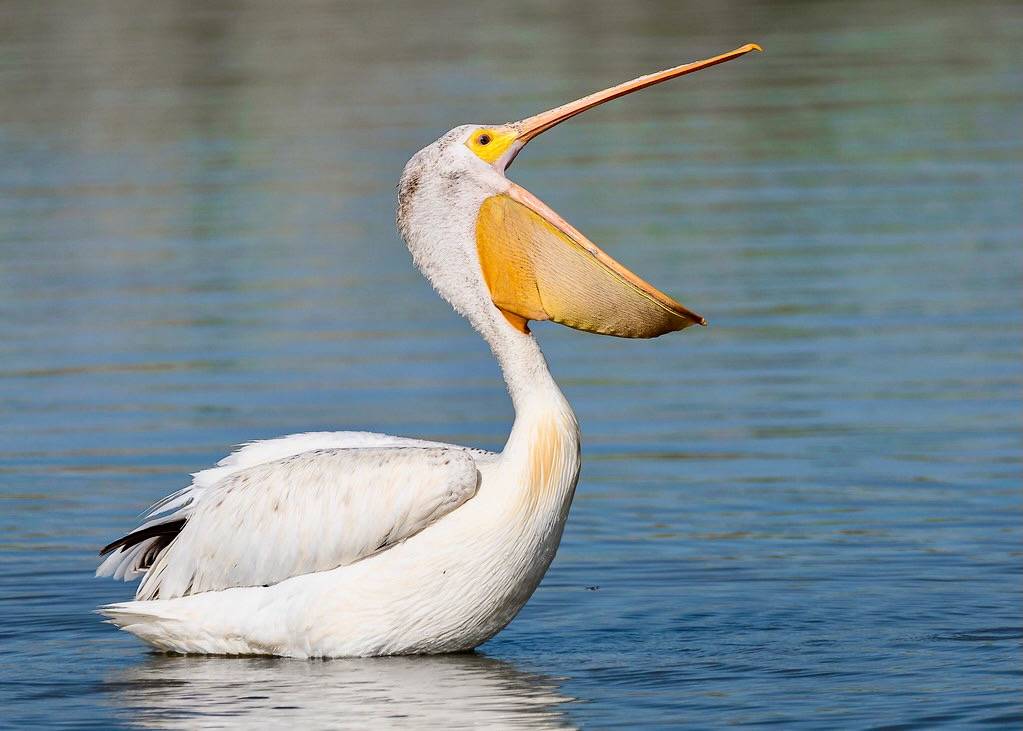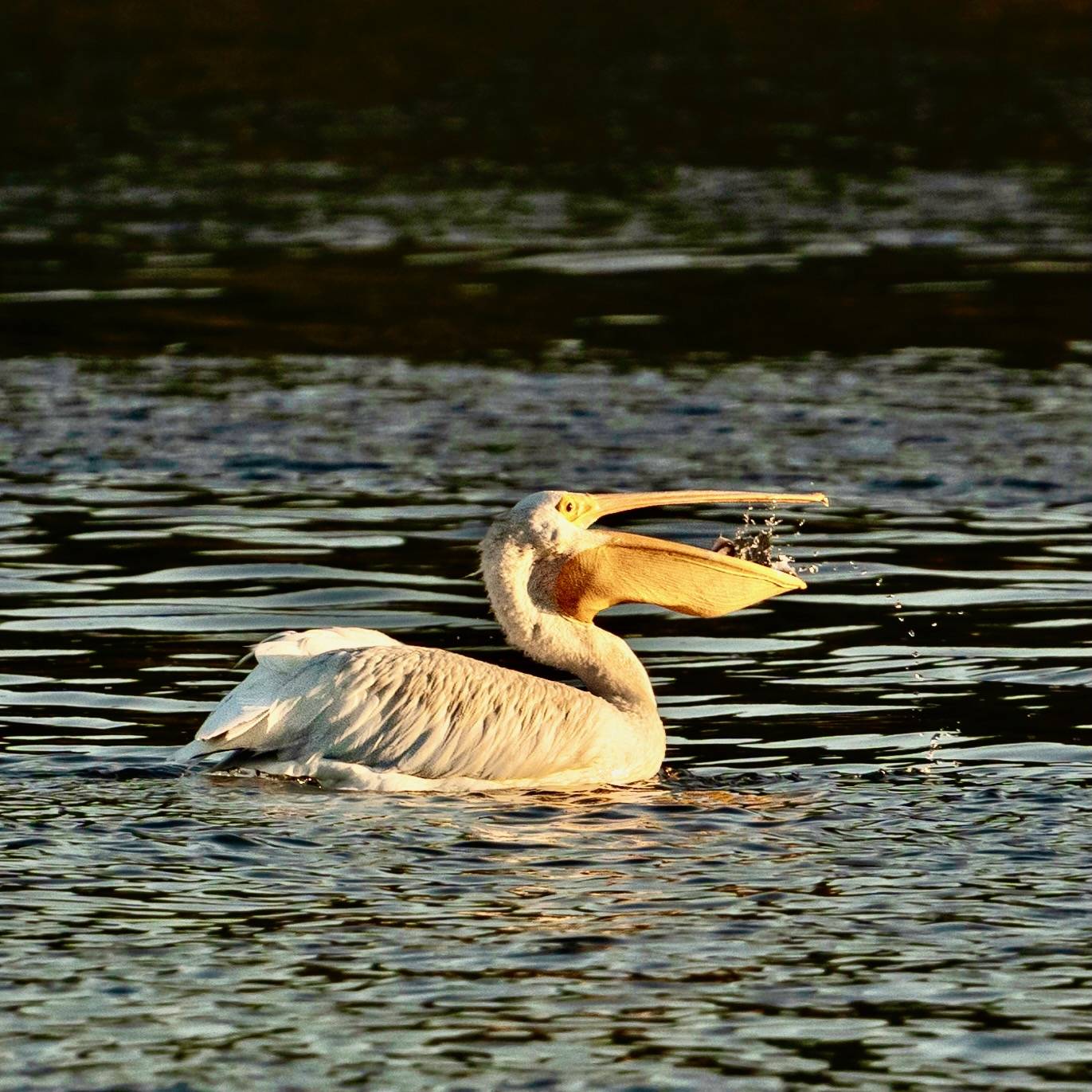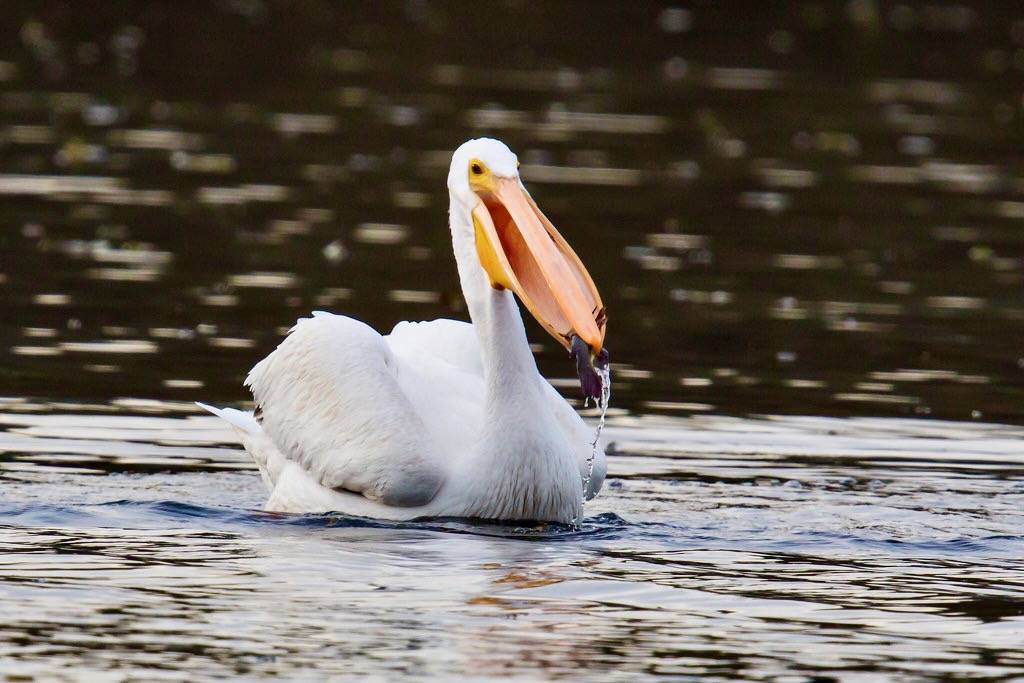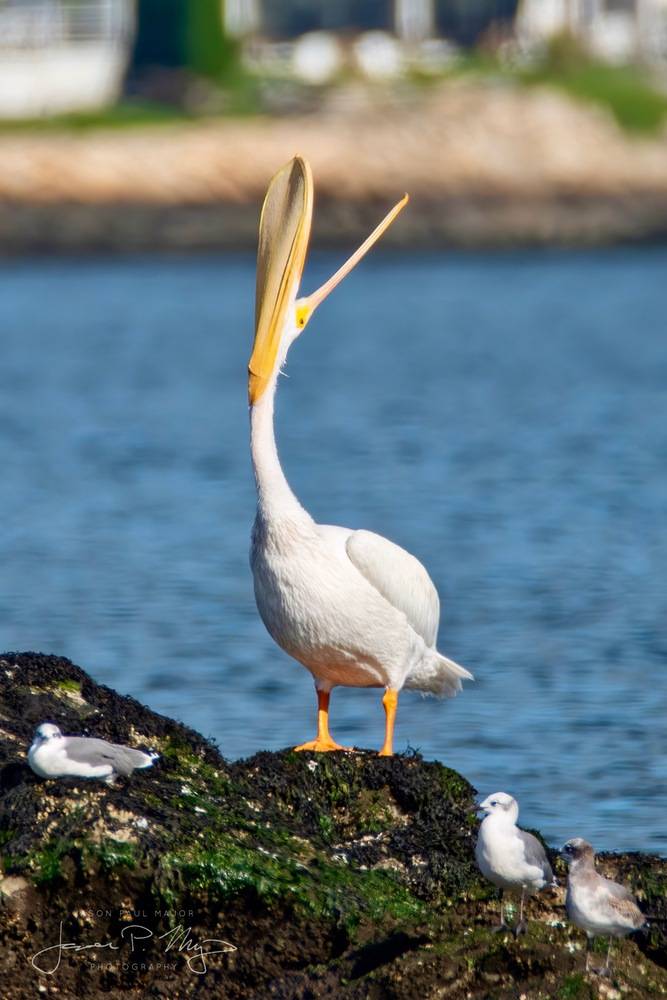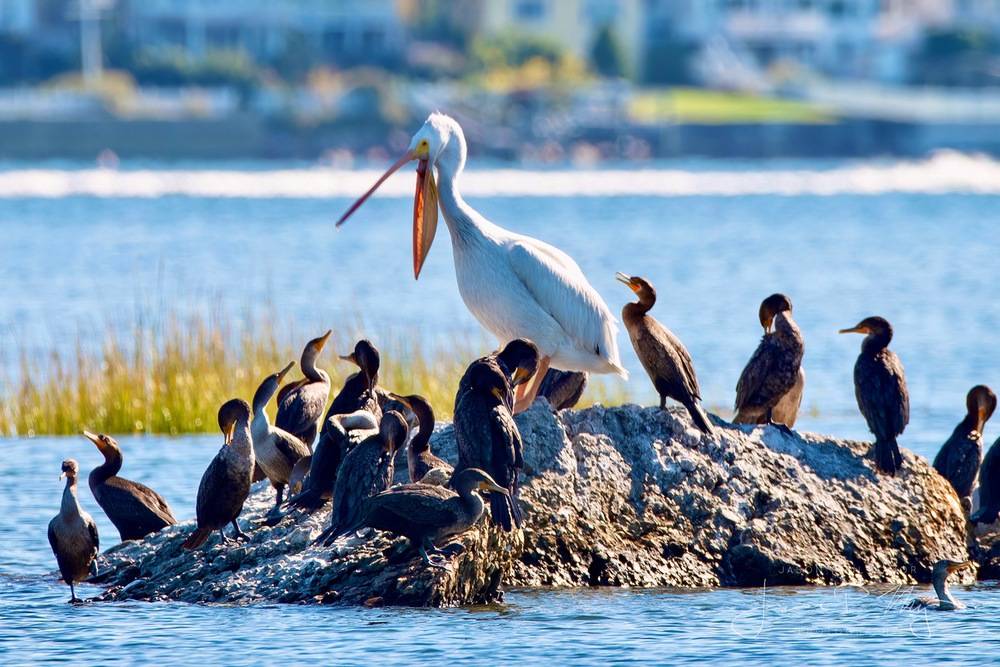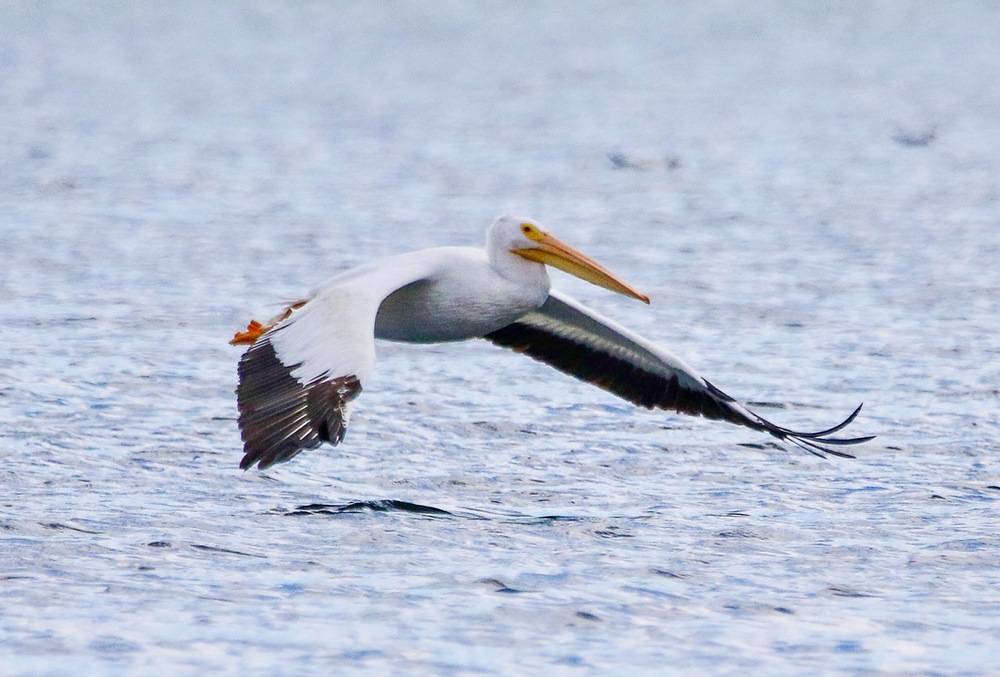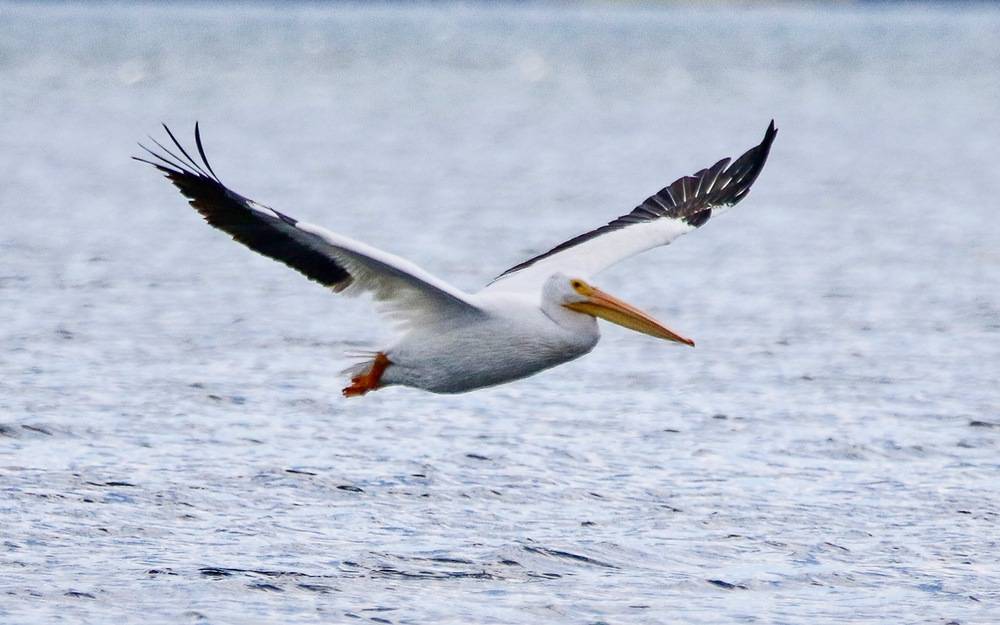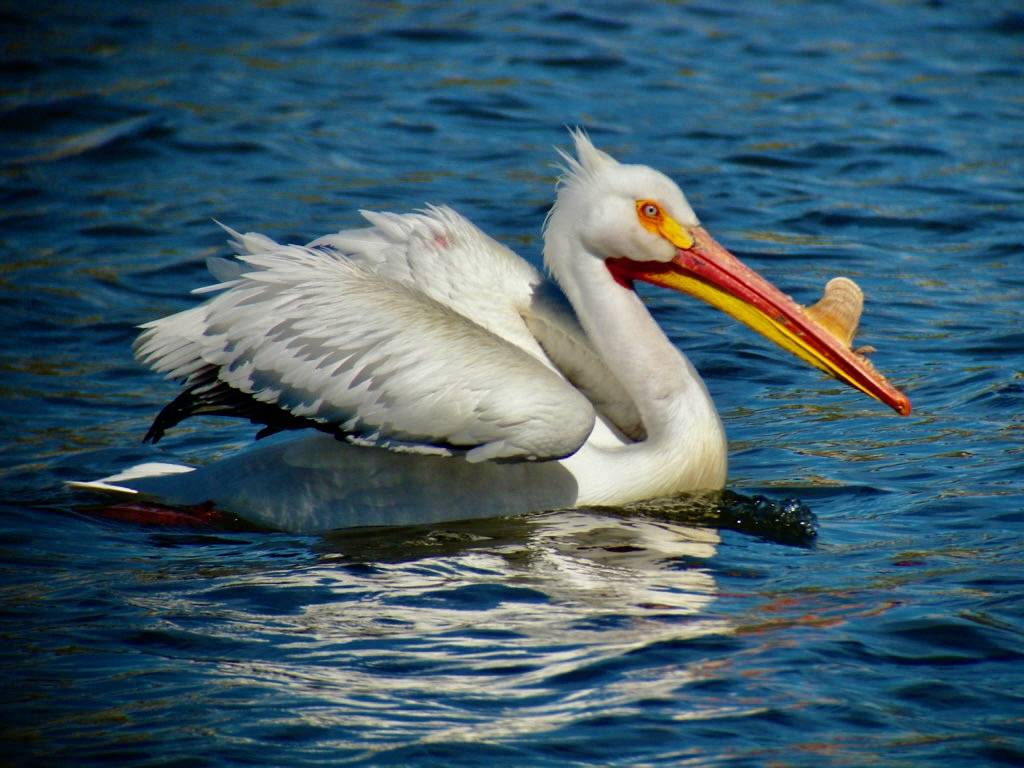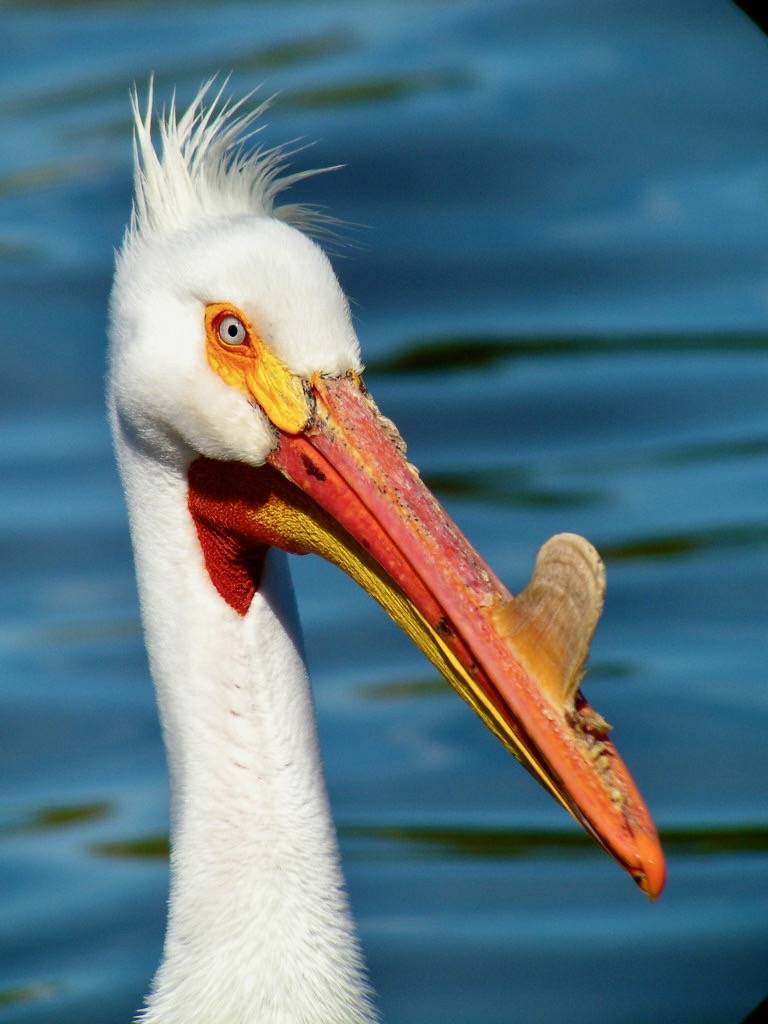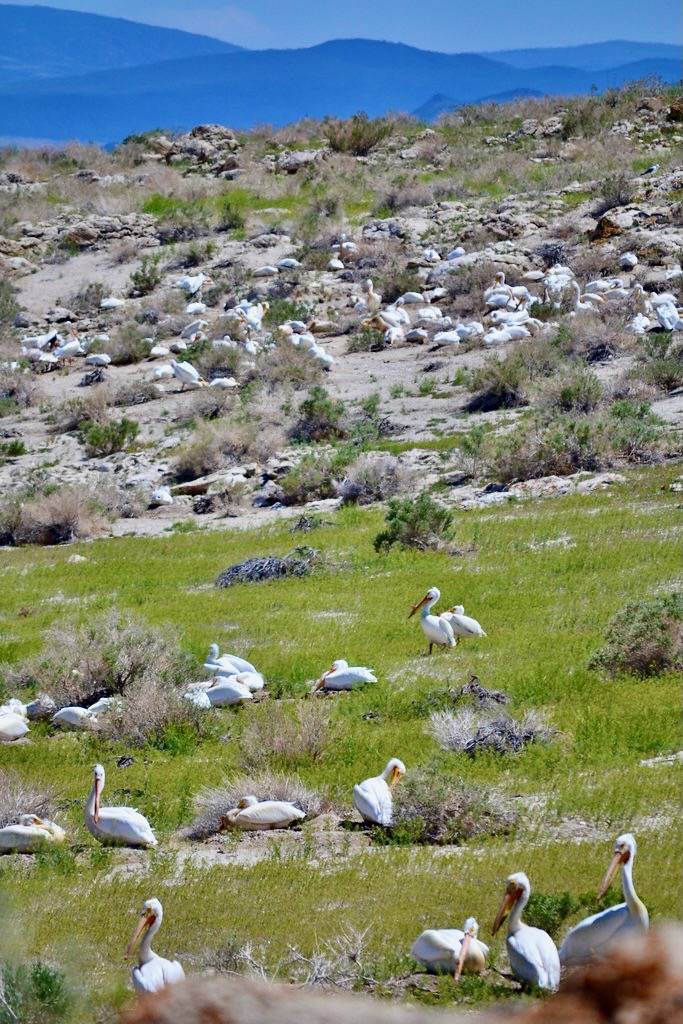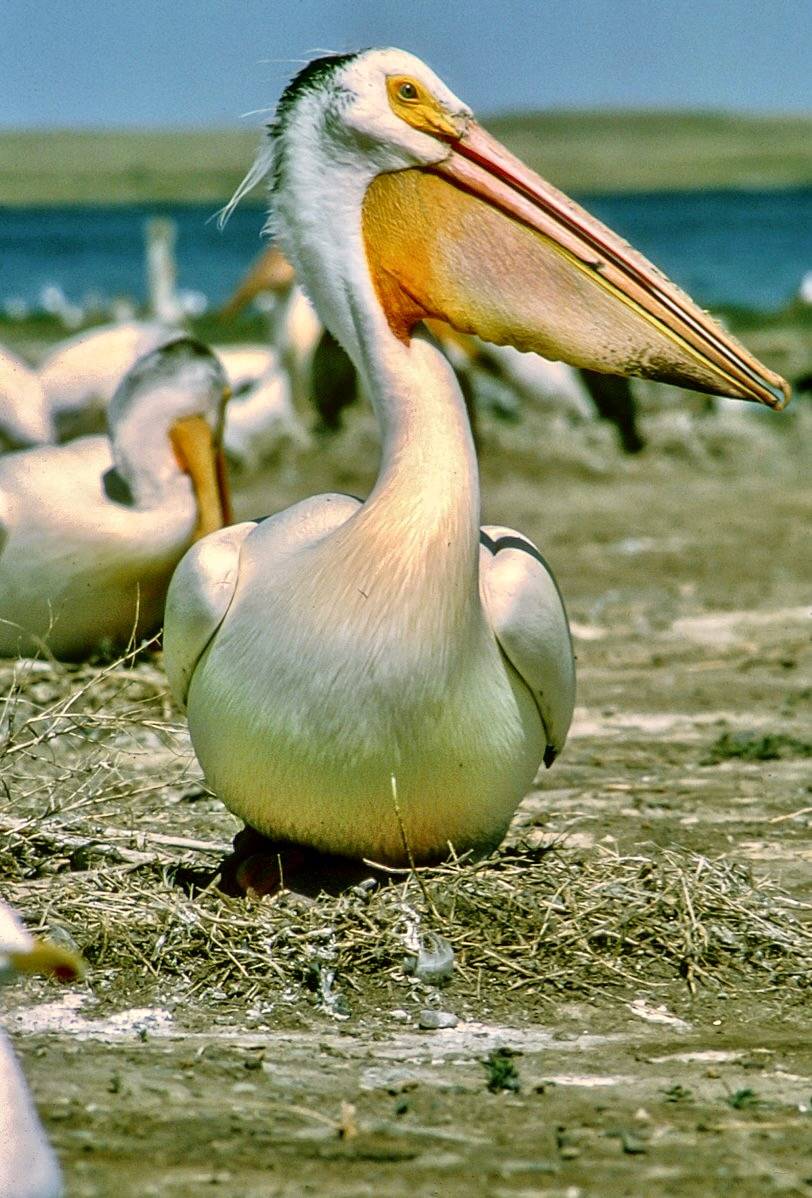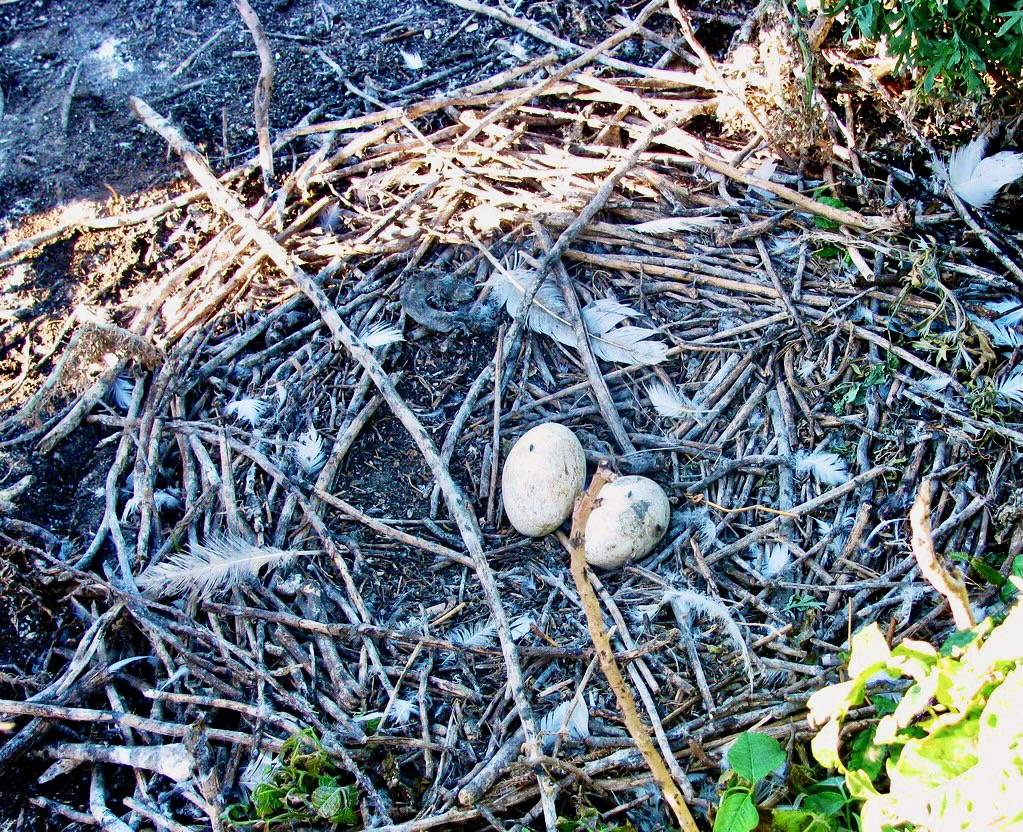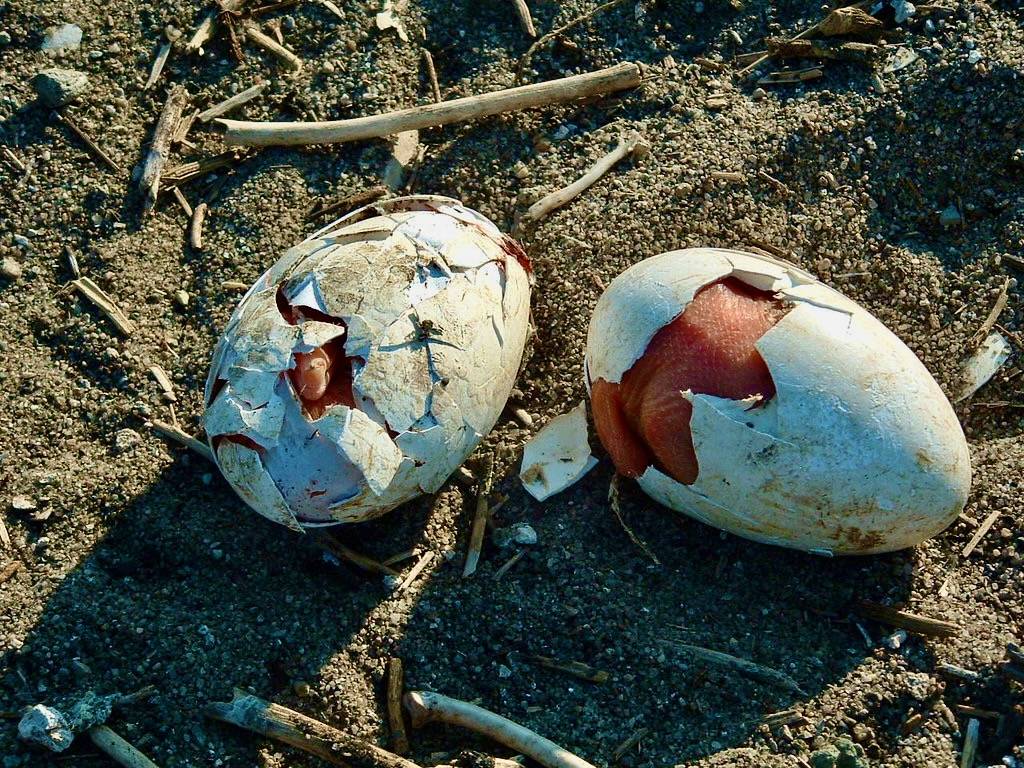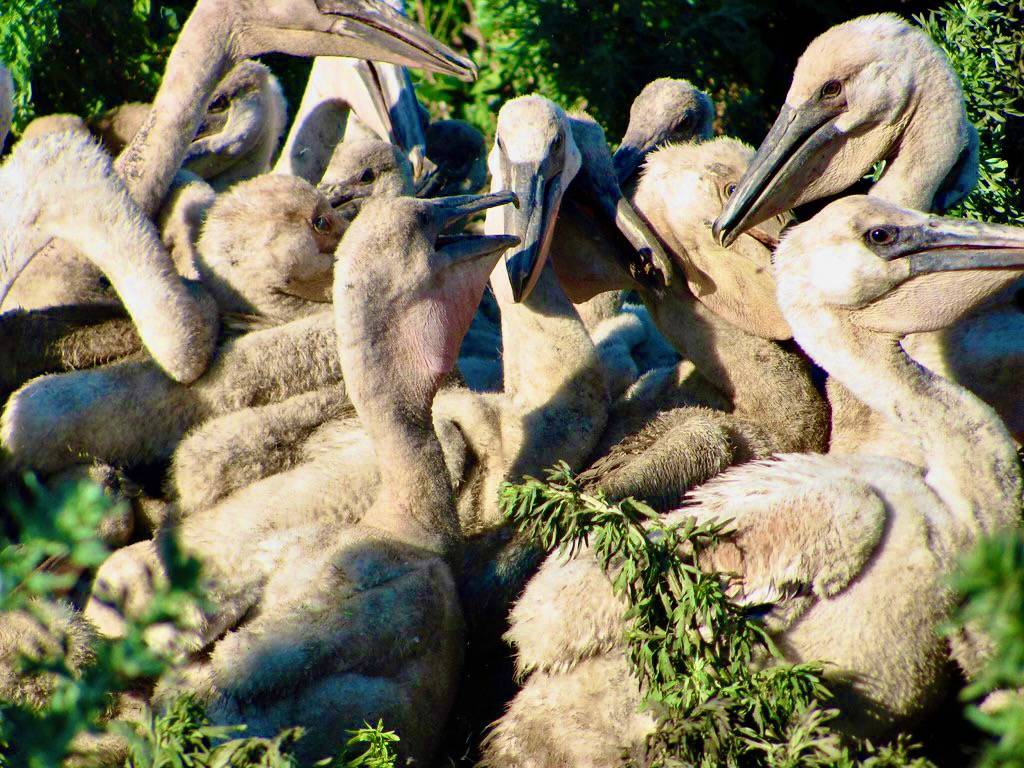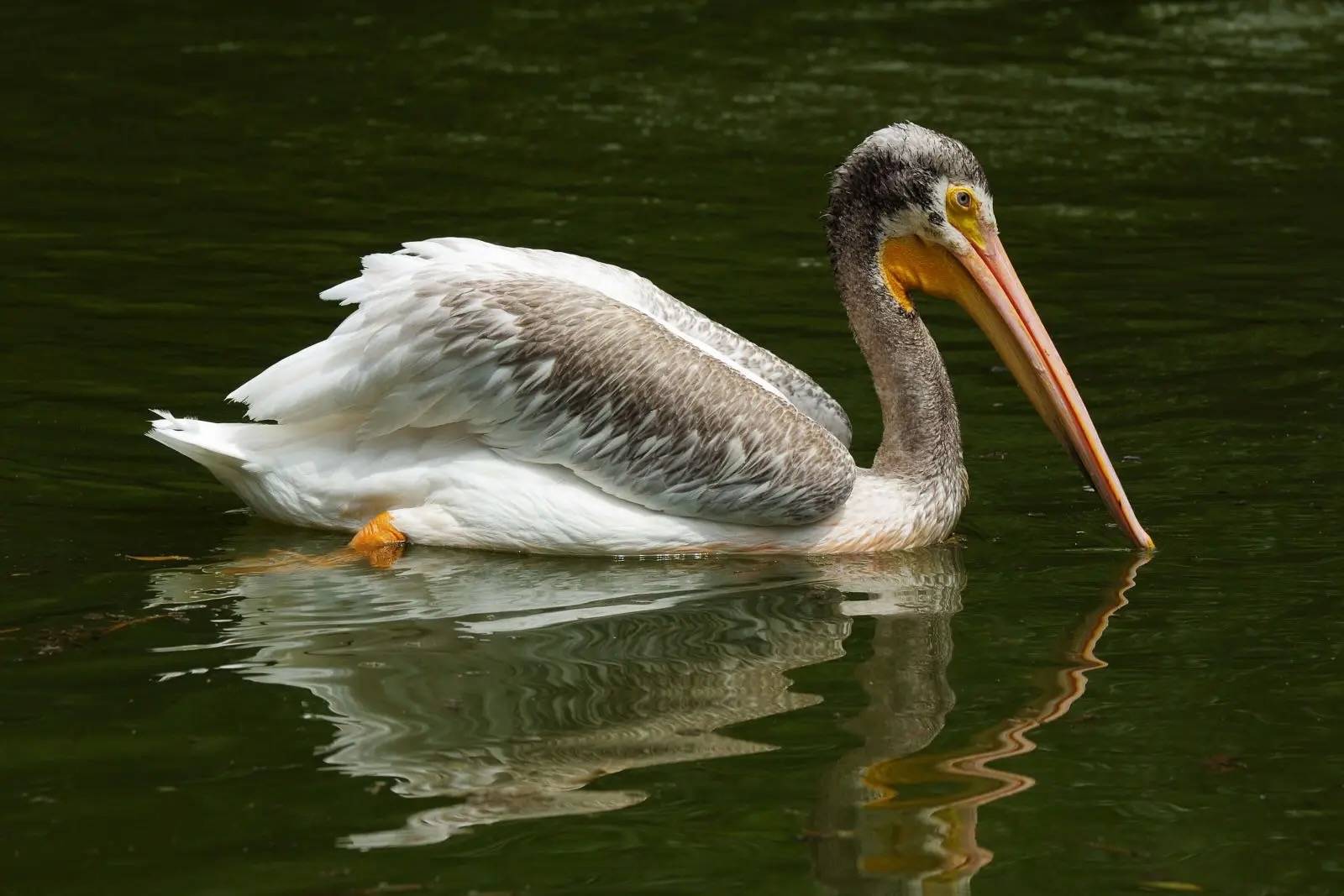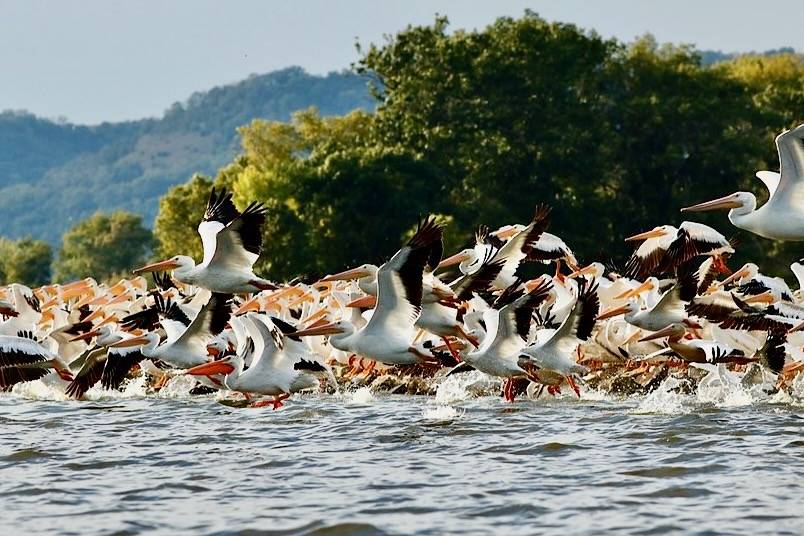American White Pelican
It is a mystery how and why a solitary American White Pelican ended up on the southern tip of Rock Island at Salter Grove in late September, 2022. It is a sizable and gregarious waterbird that normally breeds on remote inland lakes and marshes west of the Mississippi, and winters in similar habitat where fish is plentiful along the Gulf of Mexico. Smoke from extensive fires within its breeding range earlier that month may have cause confusion and separated it from its companions as they were migrating south to wintering grounds.
The pelican appeared quite at ease while it was in the park, preening and resting among Double-crested Cormorants which are frequent companions elsewhere as well. However, despite the high density of bait fish present, it probably did not feed as well as it normally would have in the company of other pelicans. Foraging on its own, it was unable to corral schooling fish to fill its capacious bill pouch.
Large is the adjective that comes to mind in describing the American White Pelican. It breeds in large colonies of 8,000 to 10,000 individuals and migrates in large flocks. It stands at 4 feet, has a wing span that stretches up to ten feet, and weighs 16 pounds on average, ranging to 30. It has a long massive bill from which dangles a deep capacious pouch. An individual bird consumes more than four pounds of fish a day and gets this through cooperative hunting with other pelicans to round up and capture abundant schooling fish.
During the breeding season, both males and females develop a conspicuous horny fin-shaped protrusion on the bill. There are elaborate courtship displays but the nest is just a few sticks scattered on a mere scrape in the soil. Usually two eggs are produced but because of fierce sibling competition, only one chick may reach fledgling stage. Once surviving chicks are able to move from the nest, they form a crèche with young from many other nests while both their parents forage for food. It takes 150 pounds of fish to raise a pelican chick from hatching to the time it can forage on its own!
Like another large fish-eating bird, the Bald Eagle, the American White Pelican was in steep decline in the mid 20th century. The heavy usage of DDT and other agricultural pesticides concentrated in the tissue of its prey species and these chemicals greatly impaired egg production. Following strict control of these environmentally harmful substances, pelican populations have recovered. However, disturbance to its breeding habitat due to extreme weather events or destructive human activities continues to be a threat.
For more information:
https://www.allaboutbirds.org/guide/American_White_Pelican
https://www.audubon.org/field-guide/bird/american-white-pelican
https://en.wikipedia.org/wiki/American_white_pelican
https://www.borealbirds.org/bird/american-white-pelican
https://nhpbs.org/natureworks/whitepelican.htm
https://animaldiversity.org/accounts/Pelecanus_erythrorhynchos/



